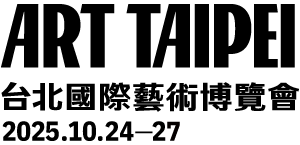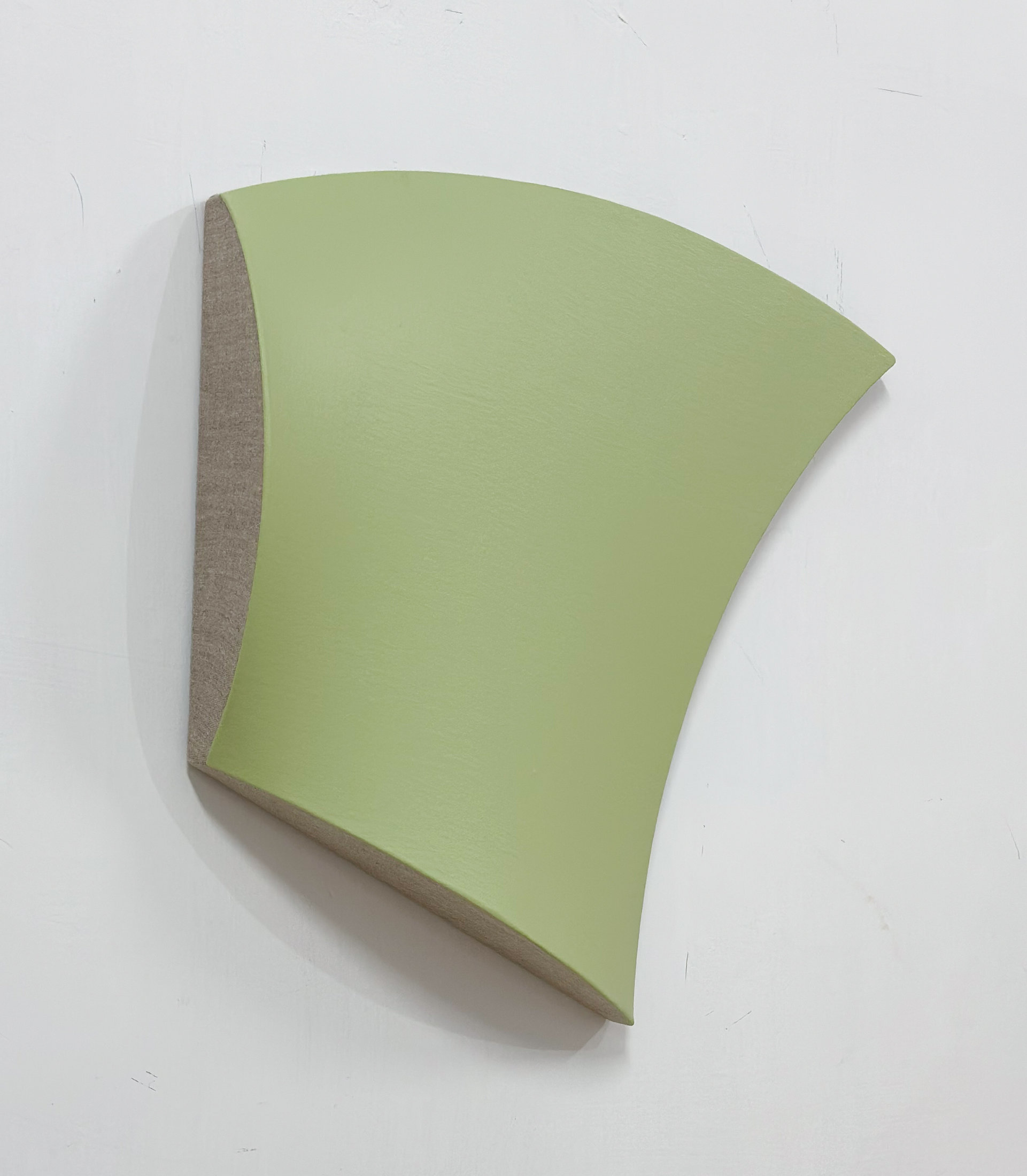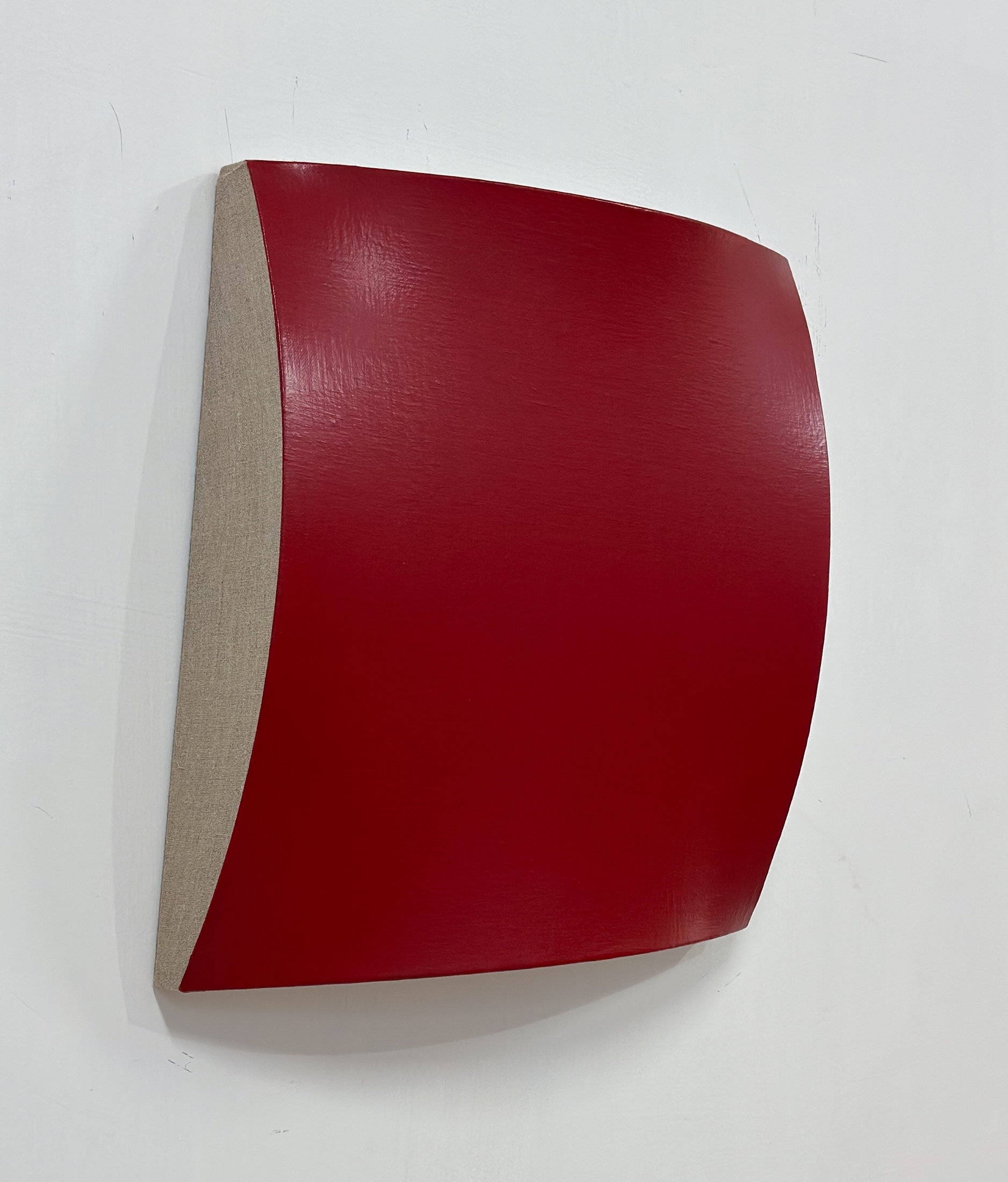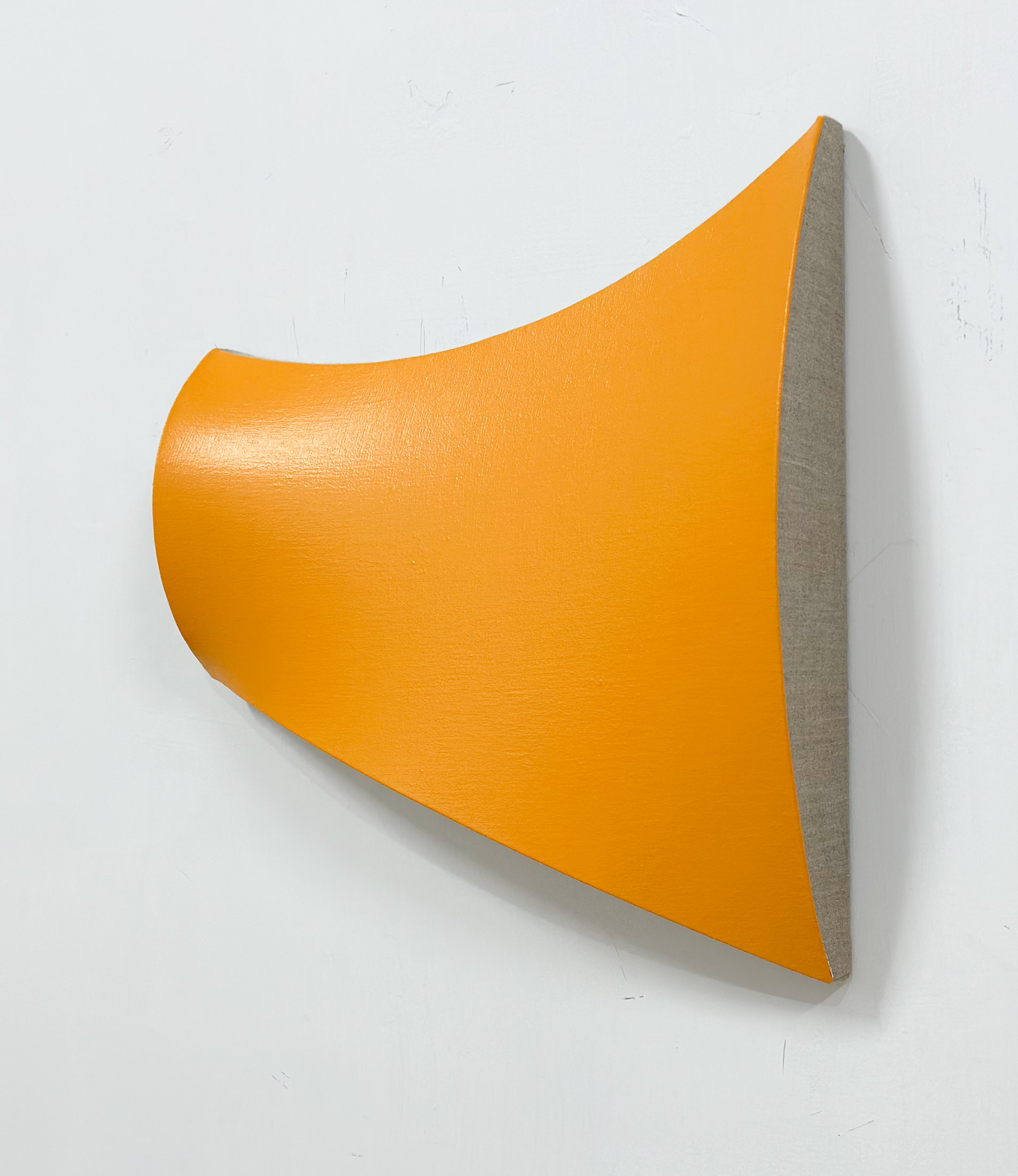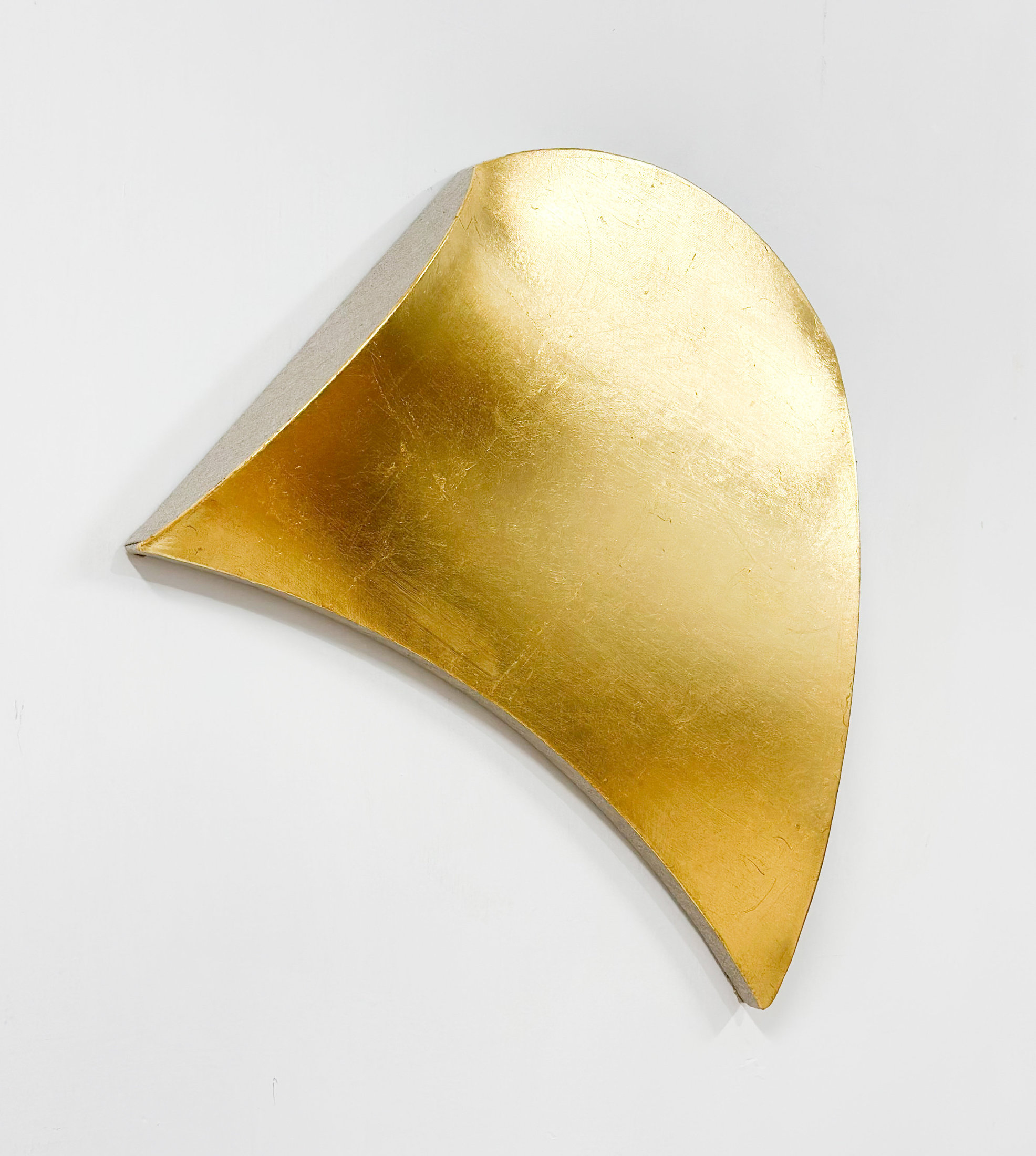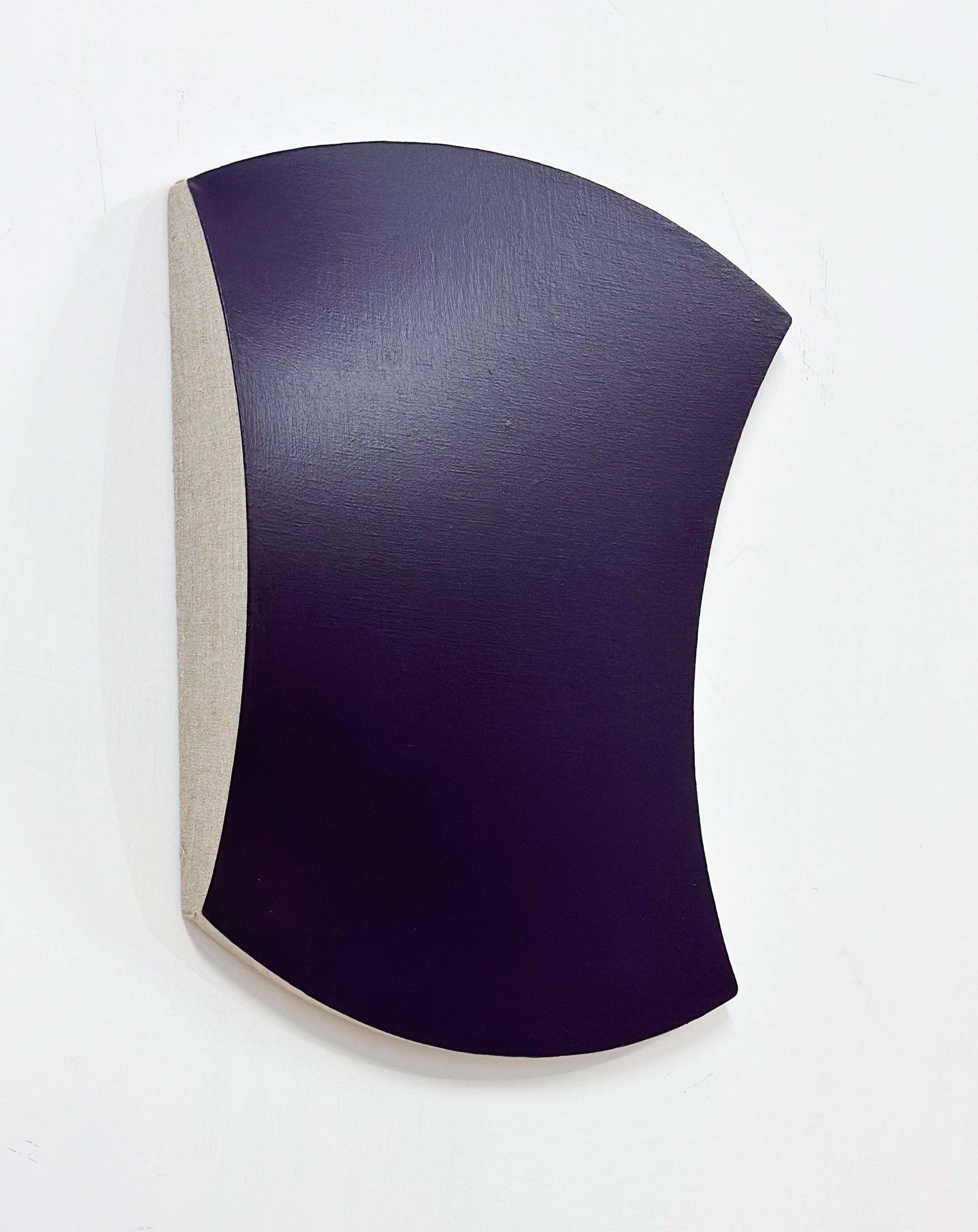Jan Maarten VOSKUIL
荷蘭
Jan Maarten Voskuil (b. 1964, Arnhem, Netherlands)
At Art Taipei 2025, Jan Maarten Voskuil presents a new body of work created during his residency in Xinying at the end of 2024, including the series The Origin of Characters. Inspired by the principles of Chinese character construction—such as pictographs and ideograms—Voskuil translates the generative logic of writing into his visual language.
In this series, he created pairs of works that can be fitted together, forming a new composition when combined. Much like how characters interlock within a symbolic system to generate new meanings, these modular paintings highlight the relational and constructive nature of form. This approach extends Voskuil’s long-standing investigation into the canvas as a shaped entity.
Alongside this, Voskuil debuts his new Cuble series—Cubist Circles. These works merge the logic of Cubist fragmentation with the harmony of circular structures, resulting in rigorous yet poetic visual experiments.
As always, Voskuil’s practice hovers between painting and sculpture, and here he invites viewers to reflect on the intersections of language, structure, and perception through entirely new formal inventions.
Painting on the move: Jan Maarten Voskuils Yoga for pictures
Dr Reinhard Spieler, director Sprengel Museum, Hannover, text for book Roundtrip 2019.
In recent years Jan Maarten Voskuil has further developed his painting into various new groups of works. The pictorial vocabulary is so strictly limited that one can actually only speak of radical minimalism: pure monochrome, absolute non-representation, no painterly handwriting or ductus visible at any point. That 100 years after the departure into abstraction and the autonomy of the picture, after countless attempts by Kasimir Malevich to Ad Reinhardt, from Theo van Doesburg to Josef Albers, from Frank Stella to Ellsworth Kelly to push the picture to its limits, it is still possible to further develop the classical panel painting on a quite fundamental level into completely new border areas seems hardly imaginable - and is presented by Jan Maarten Voskuil with as much modesty as breathtaking consistency.
Voskuil limits himself in his work to a minimal basic vocabulary. The Alphabet of silly colors and New Characters (both 2012) already name this quite concretely in the titles of the work groups - it is about letters, individual building blocks of a visual language, and at the same time Voskuil also plays with the double meaning of the word in the concept of characters, which means not only letters, but also character. These "character letters" are shaped canvases, which are modularly composed of segments of a circular surface and a sphere with the same radius. Already in the surface, the possible variations of swinging forms are so numerous and complex that an extensive "alphabet" can be developed from them. Due to the additional "complication" of the spatial dimension in convex and concave formation, the variation possibilities increase exponentially. We know the enormous effect of the shaped canvas on the wall of Ellsworth Kelly; with Voskuil the effect is not only limited to the wall surface, but now also radiates into the third dimension, into the room. The classic panel painting stretches and curves, seems to deform on the one hand and yet remains within the strictly logical framework of mathematics and geometry on the other.
Although these are undoubtedly wall works, we experience a flowing transition from the classical panel painting to object and sculpture.
In the Alphabet of silly colors, the basic vocabulary of forms is supplemented by that of colors, so that Voskuil develops an enormously complex pictorial language from these simple basic building blocks. In the narrower sense of the word, one would actually have to speak of a pictorial writing that nevertheless does not claim any semantics other than pure, formal self-referentiality.
The Dynamic Monochromes (2012) also consist of a strict basic module, which, as the title suggests, is then subjected to dynamic deformations. Each work consists of nine parts, which - as the work suggests - were squares or rectangles once, and which together form a large square or rectangle. Each of the nine partial squares now seems to have been subjected to dynamic movement processes; angles are changed and thus change not only the individual part, but also the overall form. And here, too, dynamization refers not only to the extension of the surface, but also to the spatial dimension. It seems as if the viewer is witness to stretching exercises in concrete art, an aerobic program that suddenly sets geometric art in motion and creates a tableau on the wall that is full of tension in the truest sense of the word. What at first appears to be a purely formal game, Voskuil develops far beyond that as a cryptically ironic scenario: he prescribes a proper fitness program for the aging Concrete Art in order to bring it back into shape - precisely by changing and dynamizing its familiar form.
The Improved Dynamic Monochromes (2014/15) shows how humorously he plays with this group of works. Here he dynamizes the deformation even further and inserts cracks or interstices into the individual building blocks, as if strong centrifugal forces were tearing apart the basic geometric form. The strict structure becomes even more dynamic, before the immediate dissolution of its form. And at the same time the question arises: is the dissolution and dynamization of form really the improved form? It seems as if Voskuil was staging a slight wink at our advertising world here, for example in the automobile industry, where a "faster" is always synonymous with "better".
In the series Broken Colors (2013 to 2015), Voskuil leaves the outer form of the picture intact as a regular square or rectangle. And yet it leaves open what the "refraction" refers to: to the broken color - it is a matter of corresponding mixtures and not pure color - or to the internal refraction, which is represented as cuts and bulges/refractions in the picture field. Broken Chrome Pointing Out (2015) adds another dimension: here Voskuil uses mirroring chrome paint and thus creates an additional mirror image refraction through the curvature of the surface.
The New Pointless Works play their ironic-humorous play on both a formal and semantic level. One would correctly translate the title of the work series with "senseless" or "pointless works", but of course there is also the literal sense of the "pointless works". Formally related to the surface, they are circular works that can be read as dots - whereby a dot only exists in the surface, so that the title actually reflects a correct fact, since they are not purely flat works, but the surfaces are bent into space and extended. Voskuil comes here to particularly fascinating picture formulations and solutions, which actually unite completely paradoxical approaches. Here he connects surface and space just as perfectly as circle and square - and thus redeems what in German language stands for proverbial impossibility: the squaring of the circle and beyond that the spatiality of the surface. The works are so perfectly crafted that they conjure up an incredulous amazement in the viewer's face.
And here Voskuil goes one step further in dynamizing his works. The works can be shown either put together or taken apart in a cornered version, as Voskuil calls it. In the latter version, they are reminiscent of James Turrell's projected Corner Pieces, triangles of light and color projected into a corner of a room, which in the viewer's eye always oscillate between a positive and a negative view of the room. Voskuil's corner variant plays again with special humor and makes us think with Martin Kippenberger of a punitive transfer of the point into the corner ("Go into the corner and be ashamed ..."). The game of dynamisation works here on three levels. In addition to the expansion of the flat image into three-dimensional space, there is the physical movement of the parts of the image, which can be dismantled and placed at different points in the space, and finally, as a third level, the game with content-related links that can be related to the deformations.
In Objects and Modules, Voskuil finally transforms painting into a sculptural object that can stand freely in space. For many years he has been experimenting with modular sculptural objects composed of canvas elements. Voskuil places them on the floor, on the wall as well as on the ceiling. In their radical severity, the objects are relatives of Donald Judd and Sol Lewitt - and yet they breathe all the lightness and light-containing atmosphere of Gotthard Graubner's color space bodies.
In his works from the Shine On series of 2015/16, Voskuil works with highly reflective car paints that, in conjunction with the spatial deformation of the picture surfaces, develop an enormously deep-dynamic effect, as we know them from Anish Kapoor's objects. Movement is additionally created here by the multiple reflections, which make an exact spatial definition of the object impossible and thus keep the eye constantly in motion.
Common to all series are the consistent expansion approaches for the classic panel painting, which Jan Maarten Voskuil demonstrates on almost all levels. The only exception to this is one level: that of representation. Voskuil consistently restricts himself to the picture as an object and explores on this level what painting otherwise tries to do on a representational, i.e. mimetic-imaging level. In this sense, he reveals himself as a well-deserved grandson of Lucio Fontana, who opened the pictorial space not only spiritually, but also directly physically.
Voskuil sets the picture in motion. He dynamizes surfaces, bends and arches them into space, stretches and bends the canvas, thus providing it with completely new scope for action and movement. He keeps mathematical rigor and playful humour in a surprisingly light-footed balance. With dreamwalking certainty, he transcends the seemingly eternal boundaries of painting and panel painting and merges the classical genres into new hybrids. In the truest sense of the word, he subjects the strict ascetics of Concrete and Constructive Art, who have become older and somewhat stiff in the meantime, to a gymnastics program that - in order to remain in the picture - not only has consequences in the physical exercise of the pictorial concept, but in the sense of a yoga exercise for pictures also has a lasting spiritual, holistic effect. Voskuil opens up new movement possibilities for the centuries-old history of the panel painting, a spatial depth of breath that loosens rigid ideas, for example in the perception of surface and space, thus making new spiritual freedom possible. An artistic yoga program not only for the history of the panel painting, but at the end for the eyes and heads of the viewer, which can stretch our vision and thinking into undreamt-of vastness.
